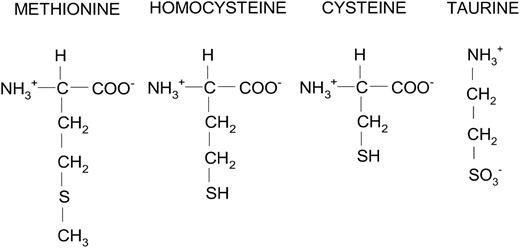Halman9000
Well-Known Member
This is a long article , but it seems to me saying that cysteine amino acid removes cyanide from soil . It also says I think that cyanide is synthesized in the soil from other naturaly occuring substances commonly found in soil . It seems to be saying that cyanide interferes root hair quantity , and that plants not treated cystine amino acid produce a lot fewer root hairs . Cysteine apparantly activates the plant's immune system and cysteine apparently interacts with the plant's mitochondria which I think interacted with the plant's DNA .
As a side note , garlic has cystine but I am not sure if it in a protein form that has to be broken down into pieces , or if the cysteine in garlic is free form and does not require being broken down .
At any rate here is the link for this long article . The photos of increased root hairs after being treated with cysteine amino acid .
Cysteine and Cysteine-Related Signaling Pathways in Arabidopsis thaliana

 www.sciencedirect.com
.
www.sciencedirect.com
.
"https://www.sciencedirect.com/science/article/pii/S1674205214602872#:~:text=In the cytosol, cysteine plays,and plant responses to pathogens."
Here is another very interesting article
The Sulfur-Containing Amino Acids: An Overview

 academic.oup.com
academic.oup.com
"https://academic.oup.com/jn/article/136/6/1636S/4664439"
I am getting very good results extracting organic fertilizer from a prefertilized Coco Coir . I add the prefertilized coco coir to water and shake very well and let sit for an hour . I scoop out the coco coir that floats to the top . Next I have the minerals and muck that sinks to the bottom . In the muck are large particals of minerals and rocks that I do not want . I pour the liquid in the bottle , but leave the muck in the bottle that I don't want . I liquid I get is clear but brown . The plants seem to really like this extracted fertilizer ( This brown clear liuid contains worm castings and probably humus and other organic micro particles . There might be microparticles of minerals that are in a collodial suspension with the liquid worm casting and stuff that suspends in solution.
Next , I realized , using critical thinking , that even though my plants looked healthy , they were growing to slow . After remembering a comment someone here mentioned , that my PH was probably too high because I use tap water ; that I let sit to evaporate the chlorine . I mix Garlic Powder in a glass jar , shake it very very good , and then let is sit for about an hour and let the non water soluble excess garlic sink to the bottom .
The reason I am using the clear yellow water of garlic mixed with water , is that Garlic lowers my PH and also because cysteine amino acids in Garlic contains sulfur . I think has to be broken down by the soil so the Amino Acids containing Sulfur , break down and change to a free form Cystein Molecule , after the Sulfur becomes a free form Element of Sulfer , At this point the free form of Cysteine is in the soil and availble to the soil and the plant easily . Garlic powder mixed with water to extract all of the good things garlic powder has , and I leave the garlic powder muck on the bottom of the jar and pour off the yellow-clear garliic liquidi that floats above the muck on the bottom of the jar .
So perhaps my plants are loving this garlic water because it is lowering my PH from 8 , down to 7 .
I was impressed when most of the plants and seedings started growing faster , with improved flexibility and improved shaped leafs soon after I added the garlic water extraction ( this is after I have been using the fertizer I extract from prefertized and mineralized coco coir ) . I am guessing that adding too much minerals that the stalk and branches get too hard . At any rate I a laying of the minerals for a while and hoping my stalks and new branches are softer .
Halman9000
As a side note , garlic has cystine but I am not sure if it in a protein form that has to be broken down into pieces , or if the cysteine in garlic is free form and does not require being broken down .
At any rate here is the link for this long article . The photos of increased root hairs after being treated with cysteine amino acid .
Cysteine and Cysteine-Related Signaling Pathways in Arabidopsis thaliana

Cysteine and Cysteine-Related Signaling Pathways in Arabidopsis thaliana
Cysteine occupies a central position in plant metabolism because it is a reduced sulfur donor molecule involved in the synthesis of essential biomolec…
"https://www.sciencedirect.com/science/article/pii/S1674205214602872#:~:text=In the cytosol, cysteine plays,and plant responses to pathogens."
Here is another very interesting article
The Sulfur-Containing Amino Acids: An Overview

Sulfur-Containing Amino Acids: An Overview
ABSTRACT. Methionine, cysteine, homocysteine, and taurine are the 4 common sulfur-containing amino acids, but only the first 2 are incorporated into proteins. S
"https://academic.oup.com/jn/article/136/6/1636S/4664439"
I am getting very good results extracting organic fertilizer from a prefertilized Coco Coir . I add the prefertilized coco coir to water and shake very well and let sit for an hour . I scoop out the coco coir that floats to the top . Next I have the minerals and muck that sinks to the bottom . In the muck are large particals of minerals and rocks that I do not want . I pour the liquid in the bottle , but leave the muck in the bottle that I don't want . I liquid I get is clear but brown . The plants seem to really like this extracted fertilizer ( This brown clear liuid contains worm castings and probably humus and other organic micro particles . There might be microparticles of minerals that are in a collodial suspension with the liquid worm casting and stuff that suspends in solution.
Next , I realized , using critical thinking , that even though my plants looked healthy , they were growing to slow . After remembering a comment someone here mentioned , that my PH was probably too high because I use tap water ; that I let sit to evaporate the chlorine . I mix Garlic Powder in a glass jar , shake it very very good , and then let is sit for about an hour and let the non water soluble excess garlic sink to the bottom .
The reason I am using the clear yellow water of garlic mixed with water , is that Garlic lowers my PH and also because cysteine amino acids in Garlic contains sulfur . I think has to be broken down by the soil so the Amino Acids containing Sulfur , break down and change to a free form Cystein Molecule , after the Sulfur becomes a free form Element of Sulfer , At this point the free form of Cysteine is in the soil and availble to the soil and the plant easily . Garlic powder mixed with water to extract all of the good things garlic powder has , and I leave the garlic powder muck on the bottom of the jar and pour off the yellow-clear garliic liquidi that floats above the muck on the bottom of the jar .
So perhaps my plants are loving this garlic water because it is lowering my PH from 8 , down to 7 .
I was impressed when most of the plants and seedings started growing faster , with improved flexibility and improved shaped leafs soon after I added the garlic water extraction ( this is after I have been using the fertizer I extract from prefertized and mineralized coco coir ) . I am guessing that adding too much minerals that the stalk and branches get too hard . At any rate I a laying of the minerals for a while and hoping my stalks and new branches are softer .
Halman9000
Last edited:
